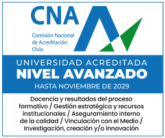Materials coated with nanofilms obtained by polyelectrolytes assembled layer-by-layer are promising as antibacterial surfaces. Nanofilms of hyaluronan/chitosan (HA/CHI) have satisfactory antibacterial effects against human pathogenic bacteria, such as Escherichia coli and Staphylococcus aureus, but are not efficient for Pseudomonas aeruginosa. To better understand the interaction between P. aeruginosa and HA/CHI nanofilms, this work evaluates the role of type IV pili (T4P) and lipopolysaccharide (LPS) structures in the initial adhesion of this opportunistic pathogen on a bioinert silica substrate and a 20 nm-thick HA/CHI nanofilm using two genetically modified strains: ΔpilA and LPS–. ΔpilA cannot twitch and LPS– lacks the O-antigen structures of LPS molecules. Our results indicate that each strain presented a different adhesion on both surfaces according to their particular features. For the silica substrate, the PA14 wild-type strain exhibited motility because formed interconnected rings, as a result of cell motility; however, in the case of ΔpilA strain, nonconfluent aggregates were generated by the lack of twitching motility in cells. For the LPS– strain, bacteria completely covered the silica, demonstrating a significantly higher rate of adhesion and growth when compared to the other strains. The HA/CHI nanofilm produced membrane damage and lysis on all the used strains, confirming its antibacterial effect during the first hours of culture. However, the lack of LPS seemed to protect the bacteria partially from the HA/CHI nanofilm, probably due to their autoaggregative phenotype, preventing the exposure of part of the cells to the nanofilm. Moreover, in the case of PA14 wild-type, cells were able to adhere on top of the lysed bacteria, using them as a new surface. This behavior may explain why this antibacterial material has not been so efficient against P. aeruginosa for longer culture times.



